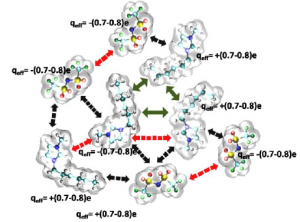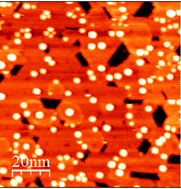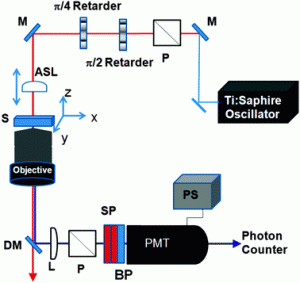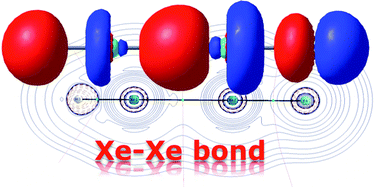We know much about the energetics in solutions and of species in solution. We can directly measure most parameters, when we measure energy. When it comes to the structure of solution or in solutions, we know next to nothing. Indirect measurements are our main source of information, as we cannot see the fluctuating solution structures. Miyuki Tanaka and co-workers have performed one of the most informative studies using indirect methods to probe solvent structures that I have come across.
In a recent paper in PCCP by Miyuki Tanaka, Tomoaki Yago and Masanobu Wakasa the microscopic structure of ionic liquid solvents is investigated. The diffusion of single particles is compared to the macroscopic measure of viscosity. They find that the ionic liquids are ‘more sticky’, when looking at the diffusion of single molecules, than more commonly used solvents; although the viscosities of the two solvents are identical.
In “Local structure of ionic liquids probed by self-quenching of thiobenzophenone” the movement of single microscopic particles in solution (molecular diffusion), are compared to measurement determining how difficult a macroscopic object moves in the same solution (the viscosity). A single particle is excited using light and gains energy. The energy can be released the by collision with another particle in the solution. By following the evolution of the population of excited particles the molecular movements can be followed.
The result presented in this paper is another piece of the puzzle we have to assemble in order to understand the microstructure of solvents, and the conundrum of solvation. Solvents are everywhere, most ubiquitous is water. We have a limited understanding of the structure of pure solvents, and know even less about the structure of complex solutions. The collection of small molecules that constitute most liquids can have an astoundingly complex structure. A structure that we have to know and understand, if we are to comprehend the complex condensed phases such as the cells that make up most living things.
At the most advanced facility for structural investigation of matter, the SLAC national accelerator laboratory, an entire team of elite scientists has been assembled ‘just’ to elucidate the structure of water. The method applied by Tanaka and co-workers is a much simpler route to understanding molecular movements in solution. When a large library of different solvents has been investigated, we will be able to deduce effects of specific solvation. Following this, we may be able to explain exactly why the ionic liquids are ‘more sticky’ than traditional solvents.
“Local structure of ionic liquids probed by self-quenching of thiobenzophenone” by Miyuki Tanaka, Tomoaki Yago and Masanobu Wakasa was published in Physical Chemistry Chemical Physics (PCCP) at the beginning of 2013: M. Tanaka, T. Yago, M. Wasaka Phys. Chem. Chem. Phys.2013, 15, 787-794
By Dr Thomas Just Sørensen
Comments Off on Micro-structure of solvents
 time-consuming and can only be applied to a small subset of ionic liquids.
time-consuming and can only be applied to a small subset of ionic liquids.













 The inherent lack of reactivity of the noble gases is so entrenched in the collective mind of the population, that even though noble gas containing compounds have been known for decades, the identification of new ones is still extremely exciting. I was therefore delighted to come across
The inherent lack of reactivity of the noble gases is so entrenched in the collective mind of the population, that even though noble gas containing compounds have been known for decades, the identification of new ones is still extremely exciting. I was therefore delighted to come across ![clip_image002[1] Photograph of Gaoquan Shi](https://blogs.rsc.org/cp/files/2012/12/clip_image0021-235x300.jpg)